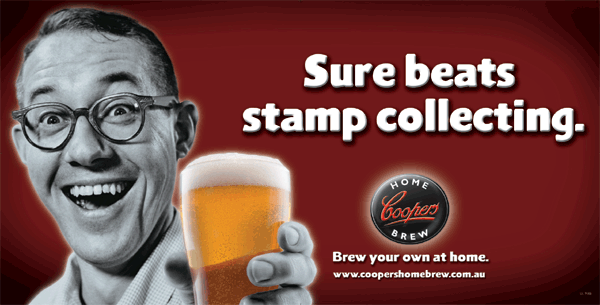When you’re writing about beer, you feel it’s only fair to let people know a little bit about your background and tastes, so they can put your commentary into a context that makes sense. With that in mind, I thought I might share some thoughts about the worst and the best beers I have enjoyed up to this point—which includes about forty years of beer drinking.
It’s important to keep in mind two things here. One, it’s quite possible that I have yet to come across the absolute “worst” or “best” beer, since we never can really know what the future holds. Two, when categorizing these beers (especially when you’re talking best beer) other factors come into play, like the impact of the moment, the color of one’s memory, and the context of drinking. Think of it this way: that ice cold Coors Banquet beer you had when after you just finished mowing the lawn in 100+ degree, record-breaking heat 15 years ago might be remembered quite fondly. Likewise, the first really good beer you had of a certain type might be remembered as the best, even though you may have had better examples since then.
THE WORST
This one’s easy. I was working at an ad agency near Cleveland, and a new Indian restaurant was just opening up in the ground floor space in our building. To help introduce themselves and build word-of-mouth business, the new proprietors invited most of the other tenants in our office tower downstairs one late afternoon for a buffet, where we were encouraged to sample a variety of their dishes. The food, as we all had hoped, was really excellent, and after sitting at a table for a few minutes, one of our hosts graciously came out to offer us something to drink.
“Well, a beer would be nice,” I replied. “If you happen to have any.”
My host's eyes lit up. “Oh yes, of course,” he said. “I have just the thing; I can bring you some beer from India!”
He returned a moment later, cracking open a tall, 16oz. brown bottle with an ornate gold label and majestically pouring into a tall pilsner glass. I looked at the label, which said World Famous Bombay Beer. I thanked him as he stepped away to help another table.
Now, before I disparage any hard-working brewer on the subcontinent, please understand that I seriously doubt this beer is a relation to any currently-available beer of this name—blonde or otherwise. This was, after all, over 15 years ago.
As I raised the glass to my lips and took some long gulps (the food was a little spicy, after all) the girls who worked in the media department observed my reaction carefully, since they were thirsty too, and were wondering if they should follow my lead. As I swallowed, I could see the looks on their faces, no doubt mirroring the confusion, bewilderment and revulsion on my own.
“What…thefuckisthisshit???” The words were hard to pronounce, since my mouth was probably contorted into the shape of a dog’s anus. Which was kinda what this beer tasted like.
“What is it?” asked the girls. “Whatsa matter? Isn’t it any good?”
I set the pilsner glass down in front of me, took a long look at it, and then inspected the bottle label again, just to make sure it did, in fact, say “beer.” Crazy as it seems, I actually found myself tasting it again, as if to confirm my disbelief.
“This,” I announced slowly, “is-absolutely-the-worst-tasting-beer-I-have-ever-had-in-my life.”
“That bad, huh?” someone asked.
“Yes,” I confirmed. “You know the Ganges River, where all those people go to bathe before they go into the Hindu temple? I think they stand downstream and collect the water for this beer there.”
In fact, after some consideration, I surmised that it wasn’t that they collected water from the Ganges to make the beer, but that the dirty water itself was actually in my bottle. It didn’t even tasted like beer—truly an indescribable mouthful of—something. Worst part was, it was a 16oz. bottle to boot. I left the other 14oz. on someone else's table.
THE BEST BEER I EVER HAD
If you recall what I said at the top of this article about remembering your best beer, then it certainly applies to this example. By the early 1980’s I had enjoyed plenty of decent beers and some very good imports, though there was not a lot available at the time. But after Merchant DuVin started importing more obscure, high-quality beers from overseas, better stuff could be obtained. Trying to save money for our first home, I found a second job working the drive-thru section at the best beer shop in town, called
The Outpost.
I can still remember coming home one night after work with a few bottles of Samuel Smith’s Pale Ale, from the Old Tadcaster Brewery. This was back when it was still in a clear bottle, and I can recall pouring this lovely brown ale into a small juice glass, gazing in wonder at it’s beautiful creamy head and savoring the rich, fruity esters that tickled my nose. The taste? It was absolutely delicious…like drinking a bite of grandma’s apple pie, but not as sweet, of course.
What a revelation that was. Who knew that beer could be that good—or that a single bottle of “the good stuff” could give so much more satisfaction than any 12-pack of ordinary American pilsner could ever muster? Like most people who have tasted today's well-made craft beers and suddenly had their eyes opened, that first Samuel Smith’s was my own real eye-opener.
Since then, I’m sure I’ve had beers that were probably every bit as good, maybe even better. But certainly, none have been more memorable…and that is what makes it the best for me.
If you have a memory of your worst or best beers, feel free to share them in the comments; I’d like to hear about them.





































